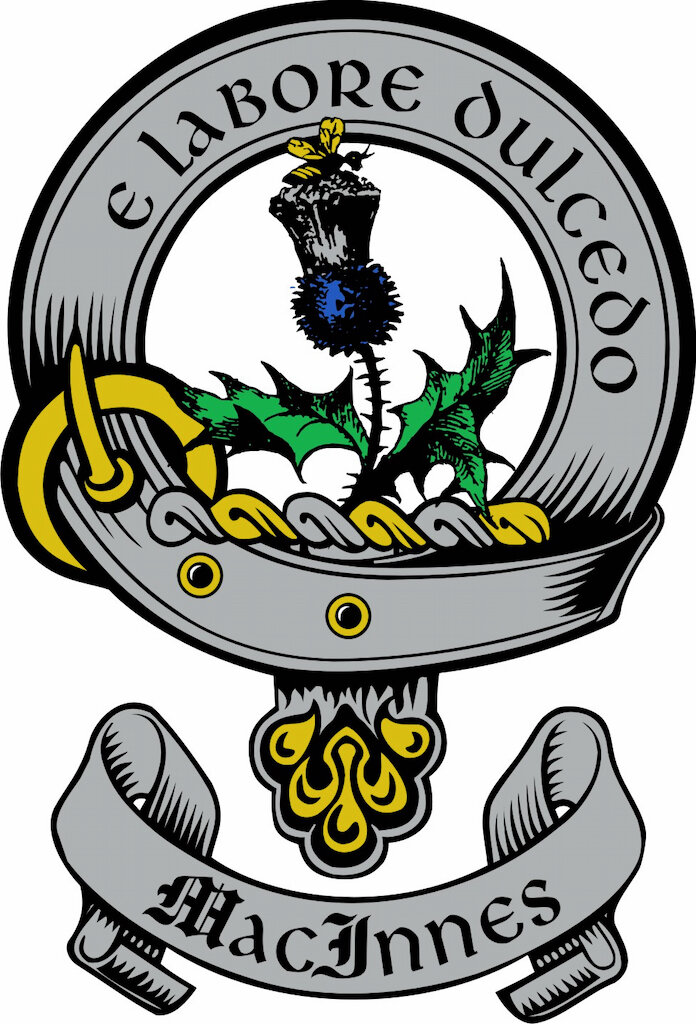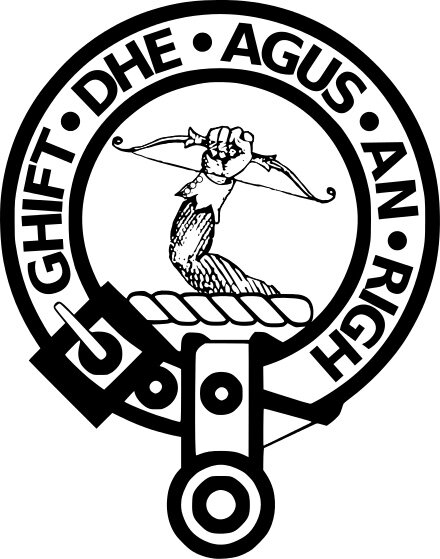The Bee and Thistle Name
Photo Credit: Mary Fraser
In keeping with true Scottish heritage, the bee and thistle is the trademark of the MacInnis clan which hails from Morvern, Scotland. At the time of Alexander II, King of Scotland, early in the 13th century, the Morvern area was under siege from the Vikings. The Chief of Kinlochaline, MacInnes, was sent to a location where the enemy was expected to land. They had a long wait and MacInnes fell asleep. In his sleep he touched a nest of bees and was stung. He woke and leaped up just in time to see the enemy landing. Calling his men to battle, they took the enemy by surprise. The Vikings were defeated by the waiting MacDonald’s men. When the fight was over, MacDonald addressed MacInnes: “My blessing on you, Chieftain of Kinlochaline. Whilst MacDonald is in power, MacInnes shall be in favour.” The Chief of Kinlochaline’s answer was: “Friendship will ever be ours, whilst the bee on the thistle is with me and with every member of the Clan MacInnes who carries the favour in his bonnet.”
MacInnis is one of the many derivatives of the name MacInnes. Our mother, Bertha, was able to determine that the first clan member to use the MacInnis spelling in our family was in the late 1700’s.
MacInnis Crest
The MacInnis clan had two official crests.
The first crest and motto was adopted in the 13th century during the Viking raid on Morvern, Scotland. The traditional emblem of the clan is the bee perched on a thistle flower, with the Gaelic motto: ‘E Labore Dulcedo' - "In labour, we find pleasure”.
The second crest and motto was adopted in 1960. It shows the right arm in proper tartan holding a bow, with the motto: GHIFT DHE AGUS AN RIGH (By the grace of God and king). This crest pertains to MacInneses of Skye - being that of the extended arm of an archer that relates “Sliochd Neill a’ bhogha” (the line of Neil of the Bow). Photo Celtus (Celtus @ english wikipedia) - cc-by-sa/3.0)
The Bee & Thistle crest beautifully rendered by our father, Ronald MacInnis.
Kinlochaline Castle
The Kinlochaline Castle is located on a rocky summit at the head of Loch Aline in Morvern, Scotland. It is located on the Ardtornish Estate in the Highland council. The castle was built in the 15th century as a Tower House, but was known as Caisteal an Ime, Scottish Gaelic for Castle of Butter. Legend has it that a Lady of Clan MacInnes, Dubh Chal (Lady of the Black Veil), is said to have paid the builder with butter equal to the volume of the castle.
The MacInnes’ were keepers of Kinlochaline for many years. It is from this castle that the Bee & Thistle Winery’s ancestors courageously protected the Morvern residents against rival clans.
The castle was burned in 1644 when it was besieged by Coll Kitto of Colonsay during the wars of Montrose. The last attack on Kinlochaline was by the Earl of Argyll in 1679. Kinlochaline was abandoned about 1690. Renovations started in 1890, however, the castle of today was rebuilt in the 1990’s and turned into a private residence.
Kinlochaline Name
The Bee & Thistle Winery is grateful to Hugh Raven, owner of Kinlochaline Castle, for allowing us to use the Kinlochaline name on our product labels. You will find the castle on our Fortified wine products, The Abbey and Kinlochaline. We are also thankful to photographers Thomas and Christine Bogdain of Germany for permitting us to use one of their photographs of the castle. Our designer, Veritas, created a sketch of their photo that is being used on our distinct and unique wine collections. The banner at the top of this page is a copy of the painting of the Kinlochaline Castle before restoration, painted by Horatio McCulloch in the 19th century.






